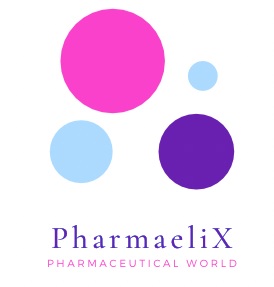UV Visible Spectroscopy Method Development is the most important Analytical aspect of the Pharma Industry. UV-Vis instruments (UV Vis Spectrophotometer) are well-developed and available in the Market. However, a suitable “Ultraviolet-Visible Spectroscopy method” is required to perform the analysis for a given compound.
To cater to the UV Visible Spectroscopy method requirements, guidance for Analytical Method development is illustrated here.
Development of UV Visible Spectroscopy Method
The minimum prerequisites for proceeding with UV Visible Spectroscopy Method Development are,
- Literature.
- A number of components are present.
- Chemical Structure and synthetic schemes.
- The molecular weight of compounds.
- Components solubility.
Literature for UV Visible Spectroscopy Method Development
Search for literature (USP, EP, JP, IP Chromatography Journals, etc) for the same molecule or for similar molecules having similar structures. Check any UV scan or UV maxima of the compound mentioned in it.
Check the availability of the solubility data.
Number of components for UV Vis Method
Based on the synthetic process, select the components to be checked in the UV method.
If more than one impurity with the UV active moiety is present, it is difficult to develop the method in the UV, as there will be possible interference.
Impurities to be considered are intermediates, process impurities, and degradants.
Collect samples, standards, and all possible impurities in each stage.
Read never before Pharma Guidelines only at PharmaeliX – Water Content in Pharma Industry 2023 & Ultraviolet Visible Spectroscopy Fundamentals 2023
Best Quotes & Best Proverbs QuoteTreat

Chemical structure for UV Visible Spectroscopy Method Development
Based on the chemical structure and the chromophore ensure that there is UV activity in the component.
Sample solubility for UV-Vis Spectroscopy Method
Check the solubility of all components in the solutions of common solvents like Methanol, Acetonitrile, organic mixtures, and water-organic mixtures with the available solubility data.
At the time of selection of the solvents check from the literature the solvent cut-off of values.
Operating at a wavelength near or below the cut-off reduces the ability to sense the compound, and increases the baseline noise due to the high absorbance of the solvents.
| S.No. | Solvent | UV Cutoff |
| 1 | n-Pentane | 190 |
| 2 | Octane | 215 |
| 3 | Petroleum ether | 210 |
| 4 | Cyclo hexane | 200 |
| 5 | Carbon disulphide | 380 |
| 6 | Carbon tetra chloride | 265 |
| 7 | Xylene | 290 |
| 8 | Iso propyl ether | 220 |
| 9 | Toluene | 285 |
| 10 | Benzene | 280 |
| 11 | Ethyl ether | 220 |
| 12 | Chloroform | 245 |
| 13 | Methanol | 205 |
| 14 | Methyl iso butyl ketone | 334 |
| 15 | Tetra hydro furan | 230 |
| 16 | Ethylene dichloride | 230 |
| 17 | Methyl ethyl ketone | 330 |
| 18 | Acetone | 330 |
| 19 | Ethyl acetate | 256 |
| 20 | Diethyl amine | 275 |
| 21 | Acetonitrile | 190 |
| 22 | Pyridine | 330 |
| 23 | Isopropyl alcohol | 205 |
| 24 | Ethanol | 210 |
The above table is for information and may be useful during the development of the UV Visible Spectroscopy Method.
In the case of the Cleaning methods, select the solvents in such a way that the component is soluble in the solvent and there is no degradation.
Ensure that the UV maxima of the component are more than the cut-off value of the solvent.
Determination of UV Visible Spectrum
Dissolve the compounds in the solvents at the concentration level of 10 ppm and scan in the whole UV region 200 to 400 nm.
Mark the UV maxima in the instrument. Ensure that the Maximum absorbances are in the range of 0.01 to 1.0AU.
Check the method precision by separately preparing the compound solution six times.
Calculate the %RSD of the method precision.
Perform the solution stability study for upto 12hrs.
The UV method finalization is depending on the Method development outcome & Justification.

Trackbacks/Pingbacks